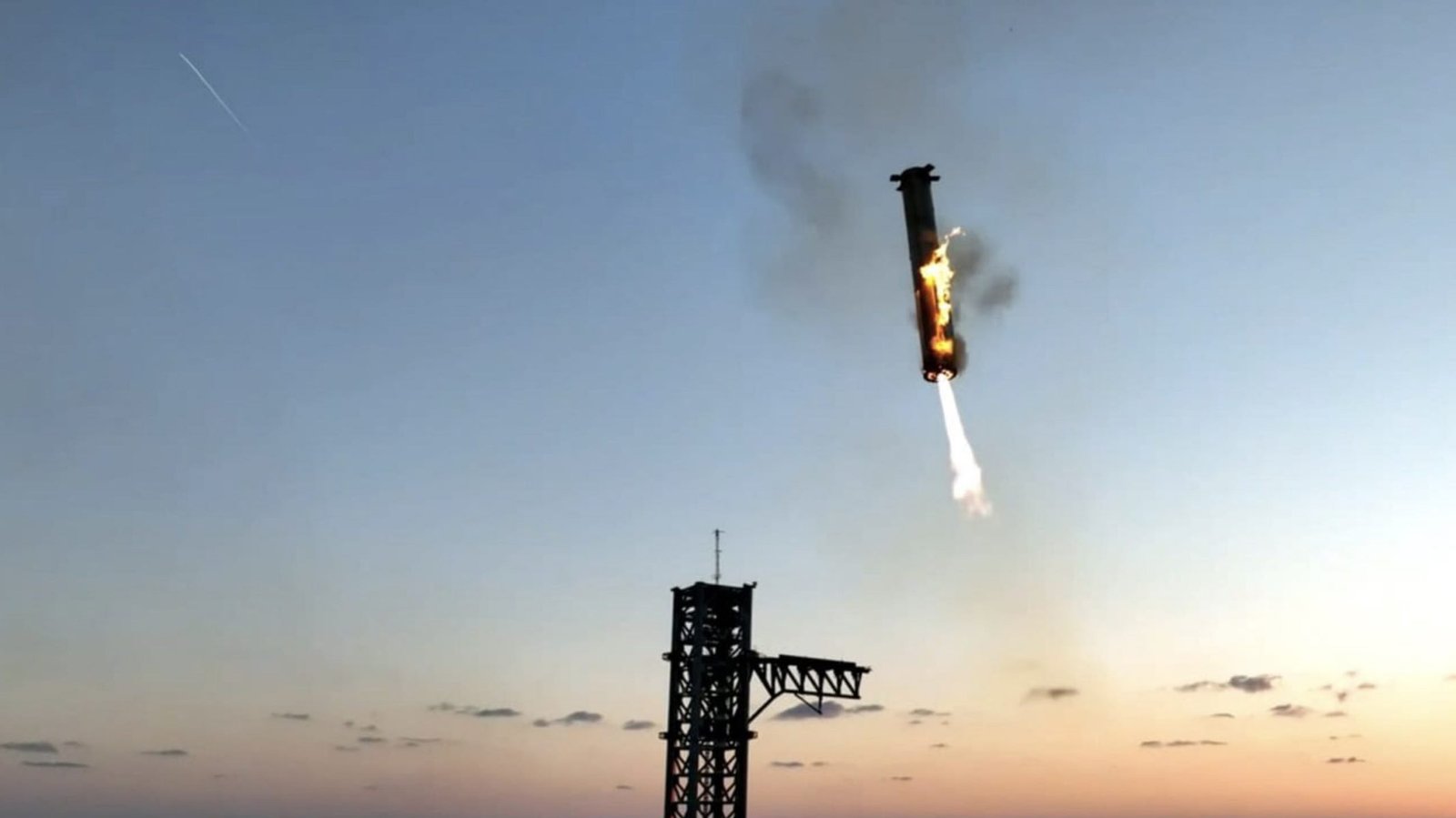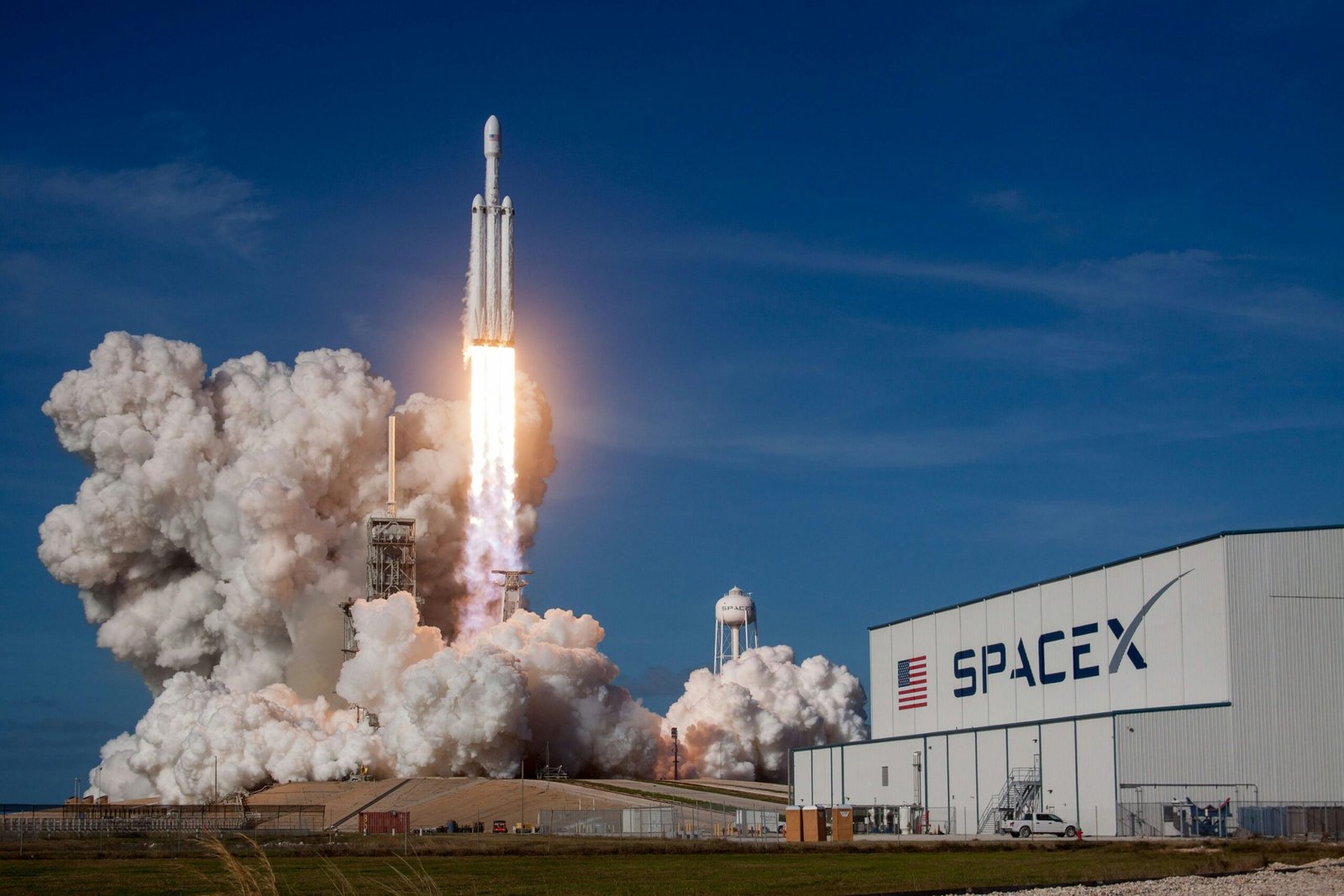Introduction
SpaceX has once again proven its prowess in the field of space exploration with a groundbreaking achievement in rocket reusability. During the fifth test flight of its Starship rocket, the company successfully caught its Super Heavy booster mid-air using a pair of giant mechanical arms, dubbed “Mechazilla.” This event has marked a new milestone in SpaceX’s goal to make space travel cheaper and more efficient. In this article, we will delve into the details of this historic feat, its implications for the future of space exploration, and why it sets a new benchmark for the aerospace industry.
The Vision Behind SpaceX Starship
The SpaceX Starship is designed to be a fully reusable spacecraft, capable of carrying both cargo and humans to a variety of destinations including the Moon, Mars, and potentially beyond. The vision behind this ambitious project, led by SpaceX CEO Elon Musk, is to make space travel more affordable and frequent. Achieving full reusability has been at the core of SpaceX’s mission to build a sustainable pathway for future space endeavors, and the recent success with the Super Heavy booster brings them closer to realizing this vision.
Why Reusability Matters
Traditional rockets are expendable, meaning that they are used once and then discarded, often into the ocean. This model drives up costs, as new rockets need to be built for each mission. SpaceX’s approach with the Starship and its Super Heavy booster is revolutionary because reusability dramatically cuts down the cost per launch. If a rocket can be reused multiple times, it can carry more payloads at a lower cost, opening up the possibilities for more scientific missions, space tourism, and even interplanetary colonization.
A Historic Milestone: Successful Booster Catch
On October 13, 2024, SpaceX achieved a significant milestone during the fifth test flight of its Starship rocket. The event took place at SpaceX’s Boca Chica launch site in Texas. The Super Heavy booster, which is the first stage of the Starship system, executed a complex maneuver where it returned to the launch pad and was caught by a pair of mechanical arms. This marked the first successful mid-air capture of a booster, a feat that had never been achieved before in spaceflight history.

The Role of “Mechazilla”
The capture of the Super Heavy booster was facilitated by “Mechazilla,” a set of giant mechanical arms integrated into the launch tower. The arms are designed to catch the booster after it returns from its mission, allowing it to be quickly reloaded and prepared for the next flight. This innovation eliminates the need for ocean-based recovery operations, which are typically more time-consuming and costly.
The nickname “Mechazilla” was coined by Elon Musk, drawing parallels to the famous kaiju movie monster. The mechanical arms operate with extreme precision, catching the booster mid-air and placing it back onto the launch pad. This efficient process is a game-changer, reducing turnaround time between flights and supporting SpaceX’s goal of achieving rapid reusability.
Technical Challenges Overcome
The achievement of catching a Super Heavy booster mid-air is no small feat. It required overcoming numerous technical challenges, including precise guidance systems, advanced control algorithms, and robust engineering to withstand the stresses of the operation.
Precision Landing
One of the biggest challenges in this operation was guiding the booster to land accurately within reach of the mechanical arms. Traditional boosters land on drone ships in the ocean, which allows for more leeway in the landing process. However, catching a booster on the launch pad requires a much higher degree of precision. SpaceX utilized advanced GPS and inertial navigation systems to ensure the booster was correctly aligned for capture.
Structural Engineering
The Super Heavy booster is a massive structure, measuring approximately 230 feet in height and generating a thrust of 16.7 million pounds. The mechanical arms had to be engineered to withstand the force of the returning booster and absorb the impact without causing damage. SpaceX engineers spent months testing and fine-tuning the system to ensure the success of the catch.
Benefits of Successful Reusability
The successful catch of the Super Heavy booster marks a significant milestone for SpaceX, not just in terms of engineering but also in terms of cost savings and operational efficiency. Here are a few key benefits:
1. Cost Reduction
Reusing rockets is considerably cheaper than manufacturing new ones for each mission. By perfecting the reusability of the Super Heavy booster, SpaceX can lower the costs associated with space travel, making it more accessible for scientific, commercial, and even tourism ventures.
2. Faster Turnaround
Traditional rocket launches involve lengthy recovery and refurbishment periods, often stretching weeks or even months. With the ability to catch the booster directly on the launch pad, SpaceX can potentially refuel, reattach, and relaunch within a matter of hours, achieving a rapid turnaround that was previously unimaginable. Elon Musk aims for the booster to be ready for relaunch within an hour of its return.
3. Greater Payload Flexibility
With reduced costs, SpaceX can offer more flexible options for payloads, allowing for multiple missions to be planned and executed more frequently. This opens up new opportunities for scientists to conduct experiments in space, and for businesses to deploy satellite constellations without the prohibitive costs associated with single-use rockets.
Implications for Future Space Missions
The success of the Super Heavy booster catch is more than just an engineering marvel; it represents a leap forward in how future space missions can be conducted. SpaceX has ambitious plans to use the Starship system for a variety of missions, including lunar expeditions and the long-term goal of establishing a human settlement on Mars.
Lunar and Martian Missions
xThe reusability of the Super Heavy booster is a critical component of SpaceX’s plans for deep space exploration. The company is contracted to develop a version of Starship for NASA’s Artemis program, which aims to return humans to the Moon and establish a sustainable lunar presence. Efficient booster recovery and rapid relaunch capability are essential for supporting these missions, as they will reduce the overall mission costs and logistical challenges.
Pathway to Mars
Elon Musk’s ultimate vision is to send humans to Mars and establish a self-sustaining colony on the Red Planet. To achieve this, SpaceX needs to make space travel as routine as flying from one city to another on Earth. The rapid reusability of the Starship and Super Heavy booster is central to this vision. By making each launch more economical, SpaceX can support the transportation of the necessary materials, equipment, and personnel needed for such a colossal undertaking.
Conclusion
SpaceX’s recent achievement with the Super Heavy booster catch is a defining moment in the history of space exploration. By demonstrating the capability to catch and reuse rockets quickly, SpaceX has paved the way for a future where space travel is no longer a costly, infrequent event but a regular, affordable occurrence. The success of the Starship system is set to revolutionize the aerospace industry, with far-reaching implications for scientific research, commercial enterprises, and humanity’s aspirations to explore the cosmos.
The implications of this achievement extend beyond mere technical success. It symbolizes a new era in space travel—one where reusable rockets can reduce the costs of missions to the Moon, Mars, and potentially beyond, unlocking new possibilities for exploration, tourism, and scientific discovery. As SpaceX continues to push the boundaries of engineering, the world eagerly watches, knowing that each successful mission brings us closer to making humanity a multi-planetary species.



